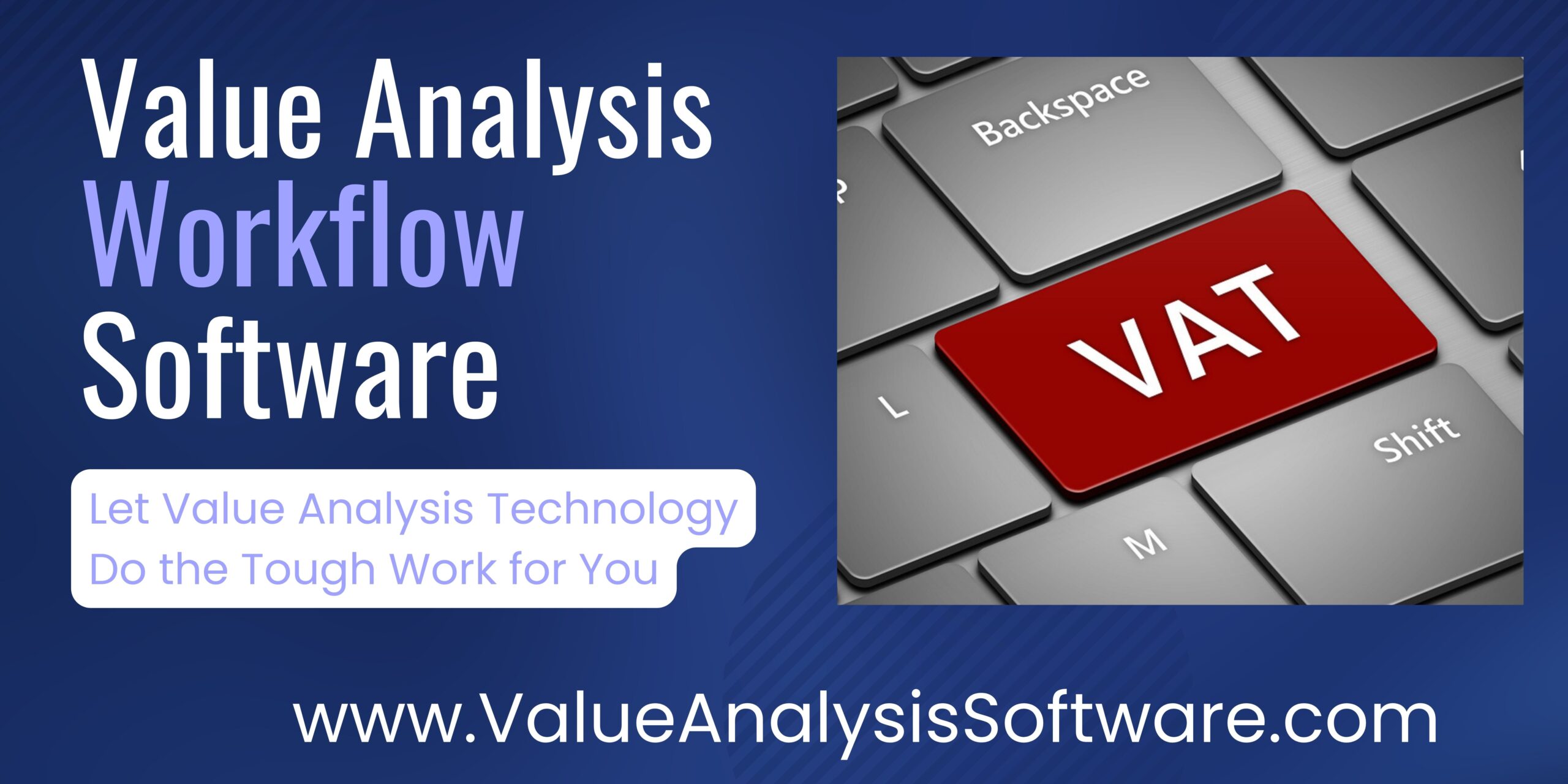James Russell, RN-BC, MBA, CVAHP, Value Analysis Program Director, UW Health, WI
 James Russell, RN-BC, MBA, CVAHP, is the Value Analysis Program Director at UW Health (the University of Wisconsin). Jim has three decades of nursing experience; a third in critical care, another third in psychiatry, and the last 10 years in healthcare value analysis. He’s been in both staff and leadership positions in the for-profit, community healthcare sector, as well as in several Academic Medical Centers. Jim has published dozens of articles on value analysis and nursing leadership, and speaks regularly at national conferences.
James Russell, RN-BC, MBA, CVAHP, is the Value Analysis Program Director at UW Health (the University of Wisconsin). Jim has three decades of nursing experience; a third in critical care, another third in psychiatry, and the last 10 years in healthcare value analysis. He’s been in both staff and leadership positions in the for-profit, community healthcare sector, as well as in several Academic Medical Centers. Jim has published dozens of articles on value analysis and nursing leadership, and speaks regularly at national conferences.
(SVAH) Could you tell us a little about your professional history and how you got into healthcare value analysis?
I have been a Registered Nurse since 1988. I’ve spent about a third of my career in critical care and a third in psychiatry (as a staff nurse and manager/director in both areas). The last 10 years has been in value analysis, mostly in the academic world (Virginia Commonwealth University, University of Florida, and currently in my new role at the University of Wisconsin).
I got into value analysis by accident! I was the nurse manager of a critical care department in a large community hospital (in the for-profit world). I served on some advisory boards at the corporate level and an opening came up to represent the entire company on the nursing advisory council at their group purchasing organization (GPO). A wonderful person named America Sherwood (to whom I will be forever grateful) pointed at me and said, “Make that guy do it!” I didn’t know what a GPO was.
Perhaps she saw something I didn’t know about, or maybe she just got lucky, but it led down the value analysis path that I’m on today. I was an okay ICU nurse and a pretty good psych nurse, but I’m better at this than either of them by far. Value analysis fits my personality traits to a “T”. I am a concrete thinker (as opposed to abstract) and need data before I can have an opinion. I hate it when people form an opinion and then try to find data to support it. In personality terms, I’m an ISTJ (Myers-Briggs).
A “Logistician” (16personalities.com). I am about results and transparency. If you’ve ever thought, “Don’t tell me about the labor pains, show me the baby,” you understand. I appreciate the need for marketing and salesmanship; I just don’t want to do it. I want the data to speak for itself. Value analysis is all about data, logic, and substance over style. It just fits.
(SVAH) Who are some of your greatest influences in the value analysis and supply chain world, and why?
I am extremely grateful to the folks who helped me along. When I got into this full-time in 2008, I was at VCU and attended an orientation at the University HealthSystem Consortium offices in Chicago. It was a full week of learning from experts, such as Cindy Abel, Karen Latimer, and Jen Davies. They were exemplary (and very patient with me). Not only did I learn how GPOs work, but I learned some valuable project management techniques and facilitator tricks. “Facilitator” is one of my favorite words. I used to introduce myself that way and say, “It means I have no responsibilities whatsoever…you all do the work and you all get the credit…I just facilitate.” It’s not quite accurate, but it’s fun to say.
As conference-goers will attest, one of the best things about this role is networking with folks that know more than me about value analysis (which isn’t all that hard). I’ve had the pleasure of learning from experts in the field like: Barbara Strain (University of Virginia), Lorra Miracle (University of Kentucky), Mike DeMasi (Stony Brook), Cathy Michalek (University of Michigan), Sally Lee (UC Davis-retired), Susan Newsom and Sylvia Trejo-Sheu (LA County/USC), Kamy Lereet (University of Colorado), Kathy Jobson (SUNY Upstate), Joan Stelling (University of Alabama-Birmingham–retired), and Rosemary Linacre (Emory). These are just of few of the dozens of folks who’ve patiently walked me through the learning process, helped me avoid pitfalls, and reminded me that they “told me so” when I ignored their advice. Value Analysis folks seem to be particularly adept at sarcasm, excluding myself of course.
(SVAH) Where do you see healthcare value analysis going over the next 3-5 years as far as scope and direction?
 I have been annoying my peers about this for a while now. As healthcare changes (somewhat more rapidly now than we’re used to), we are uniquely qualified to bring our skills to bear beyond traditional supply chain foci. I would submit that value analysis should be a part of the discussion/decision-making body for anything that involves a contract, whether that be a new exam glove, a new MRI machine, a new laundry service, a new (yet another) Information Technology consultant, or the recruitment of a new physician. We’re actually a pretty easy box to check, but it can be glaring when we’re skipped. Here are a couple of real examples (but certainly not at any of my hospitals!):
I have been annoying my peers about this for a while now. As healthcare changes (somewhat more rapidly now than we’re used to), we are uniquely qualified to bring our skills to bear beyond traditional supply chain foci. I would submit that value analysis should be a part of the discussion/decision-making body for anything that involves a contract, whether that be a new exam glove, a new MRI machine, a new laundry service, a new (yet another) Information Technology consultant, or the recruitment of a new physician. We’re actually a pretty easy box to check, but it can be glaring when we’re skipped. Here are a couple of real examples (but certainly not at any of my hospitals!):
· A hospital has Vendor A for the Radiology equipment (MRIs, CT scanners, etc.). They recruit a new Chair of Radiology who says, “I only use Vendor B.” The hospital replaces all of their perfectly good equipment to satisfy this powerful physician they are wooing. Two years later, the radiologist decides to move on to another facility and the hospital recruits a new chair. Guess what he “simply has to have”? You guessed it…Vendor A. I’m not saying Value Analysis can prevent inefficient decisions from being made, but we can certainly point out their incongruity with a facility’s mission statement well before the dotted line is signed.
· A new spine surgeon arrives at his first scheduled case in the Operating Room, looks at the implants that are open and ready for him to use and says, “I can’t use items from Vendor X, I only use Vendor Y.” When a knowledgeable OR person informs the new guy that the hospital has a 90% commitment to Vendor X, the response is, “Not anymore, if you want me doing surgery here.” Again, it’s too late for Value Analysis to do much at the end of this fiasco. Give us 15 minutes on the phone with the doc during the recruiting process. If he’s unwilling to bend on his preferences, perhaps the chair needs to recruit another physician, or the new guy needs to sway his new colleagues to Vendor Y. Either way, the incongruity will be discovered well before a patient is under anesthesia.
Again, these are real examples that have directly affected patient care and/or a facility’s finances that could have been avoided by bringing in an objective eye. You’ll notice that both involve physicians. This leads me to a rant…Physician
Preference Items (PPI). This terminology has to go away. If we have to keep the acronym, change it to Patient Preference Items. It’s not really about a patient’s preference, but what works best for their particular circumstances, but that’s close enough. We make decisions all of the time based upon the specific needs of patients, from determining whether to do surgery in an inpatient or outpatient setting, or deciding which medication to prescribe, or even how many bells and whistles an implantable device should have (demand matching). Why wouldn’t we base our preferences on patient needs, rather than physician desires? Physicians are human. They are as susceptible to the influence of a charming vendor representative as the rest of us. Who doesn’t like to go to a fancy restaurant and be seen with an especially attractive “date”? However, this can lead to biased decision-making…especially when spending someone else’s money (at least for now, where most physician practice plans are separate from the hospital’s finances). Examining a decision with an objective eye is never a bad thing, as long as you’re prepared to hear what the data shows.
This brings me to my last rant…evidence-based practice. The concept of using quality, published, peer-reviewed “evidence” to guide decision-making goes hand-in-glove with value analysis. I have never met a clinical expert who didn’t “value” the concept…at least for other people.
Unfortunately, I’ve also met many who think they’re exempt. These can be fantastically bright people, with doctorates that focus on the value of evidence, who simply can’t apply the same rigor to their own projects. True value analysis is letting the data lead you where it will, using it to illuminate your decisions, even if you decide to ignore it…at least you know you’ve done so. I’ve had clinical experts tell me things like, “I know the evidence shows that having silver-coated Foley catheters isn’t any more effective than uncoated ones…but I want to have them anyway.” I submit (frequently) that you wouldn’t make decisions this way with your own household finances. You don’t buy the undercoating protection on a new car…because it’s a waste of money. You don’t buy a protection plan on a new toaster…the store will sell you one if you want one, but you aren’t interested. You make decisions based on evidence, which includes factors like your bank balance. Do it at work, too!
(SVAH) In many of your articles and presentations, you have focused on supply utilization management as it relates to value analysis. Why do you think that is so important to healthcare value analysis professionals today?
Utilization is the “Holy Grail” of what we do. When giving presentations about my role, I always include a slide with an iceberg, showing the visible portion above the waterline as cost savings based upon price negotiations and the submerged portion being utilization. Here’s a favorite example of mine:
· A Strategic Sourcing Analyst (or whatever you call your contracting experts) negotiates a new deal on pulse oximetry, saving $0.25 on each disposable sensor purchased. Your hospital buys 150,000 of these things a year. That’s a lot of quarters! (Specifically, $37,500 in direct cost savings…nice!)
· A Value Analysis Facilitator examines the clinical practice patterns of the use of disposable pulse oximetry (utilization) and finds that the Emergency Room places one on every patient who comes into Triage. That’s 50,000 patients annually. Upon further investigation, only half of those patients get admitted to the hospital. That’s 25,000 patients who are going home soon. Do they really need an $8.00 disposable pulse oximetry sensor? How about clipping on a reusable probe and taking it off after the nurse gets a reading? If the patient is going to be admitted and needs a disposable probe, they can get one “in the back” when they’re placed in a room. That’s a savings of $8.00 25,000 times! $175,000. Buy some reusable probes and cables…spend $10,000. You’re still saving a significant amount of money, and you’re not negatively effecting patient care or making your clinicians work any harder. Fun stuff!
That’s the power of utilization. It’s not what we pay for a widget, but:
· Who uses it?
· Where do they use it?
· Why do they use it?
· What do other people use? We’re not special!
· Can they use three instead of four?
· Can it be reprocessed?
· Does it have to be disposable?
· Etc.
(SVAH) Could you give us an example of a study that you are most proud of and the elements of value analysis that attributed to your success on the study/analysis?
 I use this one all the time, because it’s not a huge cost savings, but it shows the value of having clinical input in the value analysis process. I did a project on Huber needles (used with implanted portacaths for venous access in very ill patients, such as those needing chemotherapy). Every project has a goal. Sometimes, it’s to save money, sometimes it’s to improve clinical quality. In this project, the goal was to decrease needle sticks for nursing staff. This project makes an excellent presentation (and I usually devote about 20 minutes to it). The cliff-notes version is this:
I use this one all the time, because it’s not a huge cost savings, but it shows the value of having clinical input in the value analysis process. I did a project on Huber needles (used with implanted portacaths for venous access in very ill patients, such as those needing chemotherapy). Every project has a goal. Sometimes, it’s to save money, sometimes it’s to improve clinical quality. In this project, the goal was to decrease needle sticks for nursing staff. This project makes an excellent presentation (and I usually devote about 20 minutes to it). The cliff-notes version is this:
· Baseline data: Six needle sticks annually. 20,000 incidents of accessing portacaths (with Huber needles). That’s a 0.0003 rate. It’s not quite six-sigma, but it’s not bad either.
· Clinicians didn’t want to change. TWWADI (“The Way We’ve Always Done It”) was just fine.
· We had a truly exemplary human being come to the hospital and tell her story. Karen Daley. At the time, Karen was the president of the American Nurses Association. She told her story to every nurse we could put in front of her (including large crowds). Look her up on YouTube and you’ll find her advocating for safe clinical practice by telling her personal story of experiencing a needle stick herself…then sero-converting to being HIV and Hepatitis C positive. She tells this story frequently and when she does, there isn’t a dry eye in the house. It’s powerful, humbling, and directly impacts the practice of any nurse that listens. She does this to advocate for safe nursing practice and to hold employers accountable for providing safe work environments. Simply said, she’s a hero.
· Clinicians became willing to try a new product. One that was designed in such a way that it removed the needle stick potential. After a six-month education process (you try teaching 2,000 nurses learning to drive a stick shift when they’re used to an automatic) went live. It’s been five years now. Zero needle sticks from Hubers. That’s 30 nurses who haven’t gotten stuck.
· It cost the facility $8,000 more in supply costs annually to get the new product. Preventing six needle sticks a year may not sound like a lot, but as a nurse who’s had one and spent a lot of time worrying about what would happen if my lab tests came back positive…six is a huge number.
I think this project shows the power of value analysis. The impact can be enormous. In the example above, you can attempt to quantify the impact by adding up the savings of not having to test six nurses a year for bloodborne pathogens, providing prophylactic medications, and potentially increasing Worker’s Compensation rates should one of those six sero-convert. You can also address the “soft” costs of the nurse’s anxiety and outright fear that she came to work to help people and may have suffered a life altering illness because of it. What’s it worth to avoid that? If you’re one of the six…it’s a lot. This was a long and somewhat difficult project…but the Return On Investment (ROI) was (and still is) powerful and rewarding.
(SVAH) If you had to give any advice to those who are entering the value analysis world, what would it be?
I’d say this is an exciting time to be in the field. Healthcare reform has a lot of folks scrambling to secure a foothold in the changing environment. Value Analysis is uniquely suited to navigate the new paradigms and flex with the changes. When I interviewed for my current role, I said to one of the Chiefs, “Your facility makes a significant annual profit…my job is to analyze practice variation and point it out…that annoys people. Why do you want me here?” He smiled and said, “With the changing landscape, we may not be as profitable forever, and even if we are, wouldn’t we want to be efficient?” Good answer.
 Another tidbit would be you read everything you can find on healthcare value analysis. The AHVAP website is a good place to start. If you already work in a hospital, find out if there are value analysis meetings and ask to join. Be a sponge. Learn all you can. If you’re a clinician, look around in your own areas for incidents of practice variation, whether it involves supplies or not. Variation isn’t necessarily bad, as long as it’s explainable in clear terms. I once analyzed our back surgeons and found one had costs that were way out of whack with the average. Upon investigation, I found that he did all of the scoliosis and spinal tumor cases. Okay. His variation makes sense. He isn’t doing a two-level cervical fusion.
Another tidbit would be you read everything you can find on healthcare value analysis. The AHVAP website is a good place to start. If you already work in a hospital, find out if there are value analysis meetings and ask to join. Be a sponge. Learn all you can. If you’re a clinician, look around in your own areas for incidents of practice variation, whether it involves supplies or not. Variation isn’t necessarily bad, as long as it’s explainable in clear terms. I once analyzed our back surgeons and found one had costs that were way out of whack with the average. Upon investigation, I found that he did all of the scoliosis and spinal tumor cases. Okay. His variation makes sense. He isn’t doing a two-level cervical fusion.
Be assertive. The old days of jumping up to give a physician your chair are long past us. Optimal patient care requires a team that works together. Good folks understand that. If someone questions your rationale for an action, do you get defensive? If you based your decision on evidence, I bet you don’t. Here’s a silly way to explain it:
· When I was practicing as a critical care nurse, I had another nurse come over to me and say, “I’m the kind of person who wants others to point it out when they notice I’ve made a mistake. Are you that kind of person?” I sort of stammered, “Uh-huh.” “Good,” she said, “Let me show you where you screwed up.”
Evidence-based practice is defensible, transparent, and very teachable. It demonstrates a dedication to patient care and clinician safety. Value analysis should never have to work against these concepts. They go together in every way.
(SVAH) You are a member of the Association of Healthcare Value Analysis Professionals and also a Certified Value Analysis Healthcare Professional. Why do you think it is significant to be part of this group and be certified in your field?
AHVAP is a young professional organization representing a young profession. It’s a great opportunity to get involved with the folks who started this field. There is a wealth of knowledge and experience waiting to be tapped; all you have to do is ask. Go to a conference, read a blog, and if it doesn’t excite you, you’ll know it pretty quickly. If you find yourself thinking, “Wow, that’s so cool. Look how much garbage they kept out of their landfill,” or, “Neat, they figured out how to stop losing money on a powerful procedure that provides so much good (Cochlear Implants), so they can keep doing it,” or, “Look at that. They saved money by getting a more expensive product because their utilization decreased (exam gloves that don’t tear). How cool,” then you might just be one of us!
Certification is a great way to trumpet your expertise, whatever your field. It lends credibility to your arguments and shows that you’re interested in learning. In my past, I was a Nurse Manager and I can remember encouraging my nurses to further their education and get certified. Most understood that it was a nice feather in their cap, but occasionally I had a few who would say, “I already know all I need to know.” Is that the nurse you want to take care of your mother or your father?
To wrap up, I absolutely love what I do. I get to use my clinical knowledge, apply data and evidence, and show an ROI that benefits my workplace, the people who come here for care, and those who provide that care. How great is that? I also get to network with folks who are incredibly knowledgeable and very willing to share their lessons learned, so I can avoid their mistakes (or not). Lastly, I get to do a job that uses my natural tendencies (concrete, math-oriented, data-geeky guy) to improve things around me. Notice I say “get to,” not “have to.” I can remember “having” to go to work, not “getting” to. When you find the right fit, it’s almost a crime to get paid to do it.. Almost.





